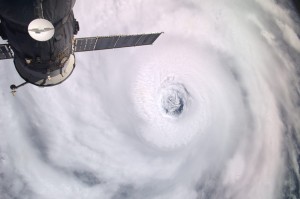RMS Rejects Hurricane Model Criticisms
 California-based modelling firm Risk Management Solutions (RMS) has rejected criticisms of its hurricane software — the industry standard among Bermuda reinsurers – made by consulting firm Karen Clark & Co.
California-based modelling firm Risk Management Solutions (RMS) has rejected criticisms of its hurricane software — the industry standard among Bermuda reinsurers – made by consulting firm Karen Clark & Co.
In a report released last week, Karen Clark & Co. said near-term computer models including RMS’ have consistently overestimated losses between 2006 and 2010, concluding they could not credibly estimate insured hurricane losses.
Aside from the RMS model, the Karen Clark & Co. report also criticised the accuracy of computer hurricane models produced by rival firms AIR and EQECAT.
“Fundamentally, the report reinforces a basic confusion that catastrophe models are designed to predict the number of hurricane landfalls over a set five-year period,” said RMS. “In fact, they are designed to deliver probabilistic estimates of the annual average number of landfalls to be expected over the next five years.
“A probabilistic forecast means that, on average, over many five-year periods, this is the number of hurricanes that can be expected. The actual number of hurricanes experienced in a particular five-year period will be just one sample from a broad distribution of possible outcomes.
“These five-year forecasts are revisited and updated every year based on the latest scientific knowledge of what determines hurricane activity, as well as the additional hurricanes that have been observed.”
RMS added that it is widely accepted that higher sea surface temperatures (SSTs) in the Atlantic increases hurricane frequency and intensity, and that SSTs have been above the long-term historical average since the early 1990s.
“Although opinions differ on whether this is due to natural cycles of variability or man-made climate change, there is scientific consensus that the proportion of intense hurricanes (Category 3-5) has increased and that since 1995 overall hurricane frequency has been significantly higher than the long-term historical average,” said RMS.
“If RMS had been undertaking a five-year probabilistic forecast during the 1940s and 1950s we would similarly have been indicating higher activity than the historical average – just as through the 1970s and 1980s, when SSTs were cooler, we would have been indicating lower activity. As a neutral party in risk modeling, RMS provides an unbiased five-year probabilistic view.”
The report from Boston-based Karen Clark & Co., headed by the former CEO of RMS competitot AIR, also suggested the observed increase in annual storm frequency is largely attributable to improvements in observational technology, leading to better detection of tropical storms and hurricanes. RMS said this is well recognised among scientists.
“As such, any bias that exists in the completeness of the offshore record has always been accounted for in the RMS model,” said RMS. “For all model parameters, RMS only uses data from sources or periods for which the associated dataset is considered complete and reliable.”
Last year scientists who worked on the development of the RMS model expressed doubts about its accuracy, one of them telling a Florida newspaper “that monkeys could do as well” in terms of predicting hurricanes.

